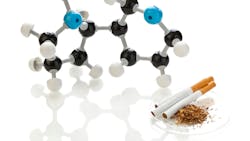New project tracks nicotine use in wastewater
The University of California, Merced (UC Merced), announced on February 10, 2025, a partnership with university researchers to track human health and habits with samples of human sewage.
The project aims to track trends of nicotine use in San Joaquin Valley communities through chemicals in wastewater.
UC Merced’s Nicotine and Cannabis Policy Center (NCPC) will collect data on smoking and vaping to help local public health agencies, community organizations and tobacco-control researchers give informed responses to the problem.
Traditional methods of collecting data about nicotine use rely on surveys and phone calls, which can often suffer from low response rates and difficulties in connecting with hard-to-reach populations.
The research will be led by Professor Colleen Naughton who will use wastewater-based epidemiology to measure nicotine use in local communities.
Naughton will work with UC Merced environmental engineering Professor Marc Beutel and San Diego State University public health Professor Eunha Hoh.
The project will start by collecting wastewater from two cities in Merced and Stanislaus counties and from the UC Merced campus.
Sewage samples will be analyzed for nicotine metabolites over a span of several months, allowing researchers to observe trends and patterns for use.
“You can see if it’s increasing or decreasing at certain times of the year. You also can see if your interventions are working, based on whether concentrations rise or fall,” said Naughton in a UC Merced news release.
Naughton expects the pilot project to be running by summer 2025.
In 2024, NCPC earned a $3.9 million grant from the University of California’s Tobacco-Related Disease Research Program, which will extend the work for at least four years.
